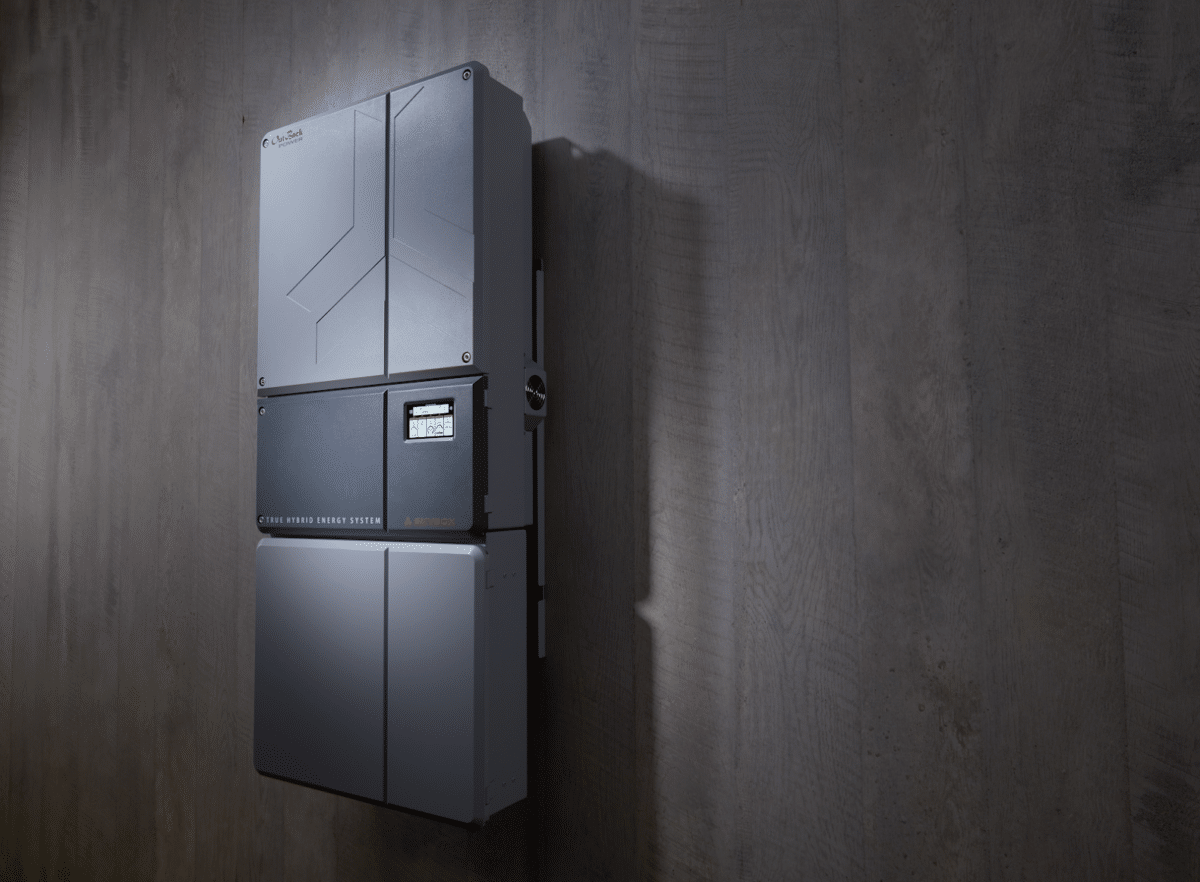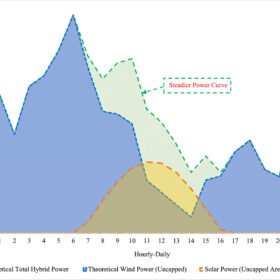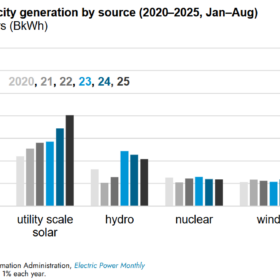By Eric Hill, Energy Storage and Systems Manager, OutBack Power
In California this fall, utilities cut power to more than 3 million people to help prevent their power lines from causing wildfires. In the aftermath, the state has seen a rush on requests for battery systems, as many homeowners with solar have realized that their solar panels will not work when the grid is down.
With the wide variety of battery systems and chemistries available on the market, there is not a one size fits all solution for every home. The choice depends a lot on the amount of power the residence needs to manage critical loads, how often the homeowner plans to use the system, and how long they want to ensure they have backup power.
Sizing the System
If a house has a properly-sized solar + storage system, residents can support the loads and charge the battery during the day. The batteries can then be used in the evening and during periods when the grid is down. Some homeowners may choose to oversize their energy storage system for up to three to five days. For others, that might be excessive considering the cost of the batteries and how likely, or unlikely, a five-day power outage might be. Consumers need to determine how much they are willing to spend for that assurance.
The first step to getting started is determining what items to back-up. Typically, they include large appliances such as refrigerators, microwaves, mini-split or room air conditioners, critical medical equipment (such as CPAP machines), and enough power to run internet routers and entertainment systems if need be.
Competent installers should be prepared to help customers identify their critical load profiles by determining the power output and use levels. As an example, a 20-watt light bulb running for four hours equates to 80-watt-hours of use. Dividing that by 1,000 will give you the kilowatt hours or .08 kWh. Adding together the kWh of usage for each appliance, the homeowner would like to run when the power is out, reveals the home’s “backed-up load.”
Next, one needs to understand the size of the existing solar system. Typically, California systems are grid-tied, meaning their primary purpose is to subsidize utility bills. Therefore, it’s essential to ensure that the system will be able to charge batteries and supply power to backed-up loads when the grid is down. The size of the system can be determined by reviewing the inverter power rating, and referencing the power output of one solar panel multiplied by the number of panels. In cases where a homeowner wants to add more panels, the solar inverter might need replacement, or a second one added depending on the use case.
Don’t forget to consider electric vehicle charging when calculating the critical load. The existing solar system may be enough to charge the EV when the power is out, but more often than not, it will not be enough. In this case, homeowners might want to consider adding more panels to their system or installing a DC-DC charging system that is allocated explicitly to charging the EV.
The third step in determining the size of the energy storage system is the available physical space to house the batteries. Typically, homeowners have space in the basement, garage or utility closet in their house. This area can factor into the battery type selected, as some systems take up more space than others. Homeowners might also have to reevaluate their critical load profile if there is not enough room to hold enough batteries to deliver the kWh they want for their budget.
Choosing a Battery Chemistry
Armed with the size of a system you want to install, the next step is to select the best battery chemistry for your needs. While lead-acid batteries might be considered “low tech” simply because they have been in extensive use for decades, that doesn’t mean they are not a viable energy storage option for battery backup applications. These batteries are typically robust and dependable, requiring little maintenance depending on the chemistry selected, and can provide extended benefits with new enhancements such as carbon which provides longer cycle life and higher energy efficiency.
Lead-acid batteries can be heavy and require specific space and ventilation requirements. Most lead-acid general purpose batteries function best when returned to a full state of charge (100% complete) after being discharged. Charging them only partially before discharging them again and letting them stay in this partial charged state for days and weeks can lead to premature degradation of the battery. Lead-acid with carbon additives overcomes this issue, providing a low-cost and reliable energy storage solution for high cycling environments, which is perfect for a time of use application or high cycling frequencies with extended power outages.
Lithium-ion batteries are also an option to consider for high cycling applications with frequent power outages. These systems are lighter weight and therefore easier to install and with fewer space constraints depending on the brand. These batteries are suited for continuous cycling and don’t lose functionality if they are only partially charged before being discharged again.
Additionally, both these chemistries above can be useful in other applications, even when grid power is functioning, such as infrequent emergency backup. Batteries can also manage energy use during peak demand times and reduce demand charge costs to end-users by powering loads. This action optimizes energy bills for the lowest cos, providing lowest total cost of ownership.
Understanding Regulations and Codes
Before selecting or installing an energy storage system, homeowners and installers would be wise to consult various code restrictions in their area. Entities and materials to consult include homeowners associations, city building departments, and fire codes. Additionally, for California systems, lithium-ion batteries should be UL listed under code 1973, and the entire system should meet the UL9540 standard. For lead-acid batteries, the UL code to look for is 1989.
Because code regulations differ in California compared to other states, Outback has packaged three options for the most common use cases in the state. Whether the homeowner needs 10.5 kWh, 15 kWh, or 22 kWh of nameplate energy storage, each package includes an Outback inverter and lithium-ion batteries specifically designed to meet California regulations. In fact, the company is offering special pricing through March 31, 2020, for California residents.
Utilities across California have signaled that the preemptive power shut offs of 2019 are just the beginning of the grid changes coming to the state’s citizens. Future years are almost guaranteed to see more blackouts and brownouts as the utilities seek to prevent future wildfires. When this fact is coupled with coming regulations tasking utilities to charge higher rates for power use in high demand period (Time of Use rates), the industry is facing big changes. The opportunity is ripe for solar installers to return to their existing customer list to open the conversation about storage.
About Eric Hill:
Eric Hill – Energy Storage and Systems Manager for Alpha Technologies Services and Outback Power, an EnerSys Company. Eric has 11+ years’ experience in energy storage product and operations management working with several applications including Renewable Energy, Broadband, Telecom, Industrial, Datacenter UPS. Eric has experience working with the following chemistries: Lead Acid, Lithium Ion, NiCd, Nickel-Zinc, Flow, Aqueous, Bi-Polar, Sodium-Ion. Eric holds a BS Finance from LSU Shreveport and is Pragmatic Marketing certified.
This content is protected by copyright and may not be reused. If you want to cooperate with us and would like to reuse some of our content, please contact: editors@pv-magazine.com.








“Competent installers should be prepared to help customers identify their critical load profiles by determining the power output and use levels. As an example, a 20-watt light bulb running for four hours equates to 80-watt-hours of use. Dividing that by 1,000 will give you the kilowatt hours or .08 kWh. Adding together the kWh of usage for each appliance, the homeowner would like to run when the power is out, reveals the home’s “backed-up load.”
Therein lies the ‘rub’. Lights, ceiling fans, refrigerator/freezer, micro-wave and some receptacles in the home for backup when the power goes out. Smart ESS and smart circuit breaker panel technologies can allow the smart ESS to select the critical circuits in the home when the power fails. Then for the most part customers need to understand the “power budget”. It may be easy to install energy storage that coupled with the solar PV could run all of the critical circuits for 24 hours, maybe beyond for the amount of solar generation available from one’s roof mounted array. IF one is rural and has a well and or a well and booster pump for the house, there would probably be a need for a separate generator set to operate these high surge current devices.
With the advent of the PSPS, folks would more than likely accept having power for critical loads in the house as opposed to whole house generator backup.
I don’t see any discussion here about utilizing an EV for emergency power during PSPS. Most EVs used for local suburban commuting probably have a very large amount of stored power, even after recent use; way more storage than any typical stationary residential storage battery. Tesla’s recently announced that in ”Camp Mode” their EVs can be used to run appliances. I don’t know any of the details or limitations of “Camp Mode”, but if it can be used to power some LED lights, my refrigerator, and maybe the blower on my gas fueled HVAC system, I’d probably be Ok for a few days, even in winter. If Ihad two EVs, I’d be totally set. When I buy an EV, I’m going to expect it to be fully equipped to do this. Most of the time, I really don’t need a battery or generator. During a PSPS, I want the biggest battery I can get; if I own an EV, that’s going to be my big battery. If you disagree, please tell me why I’m wrong.